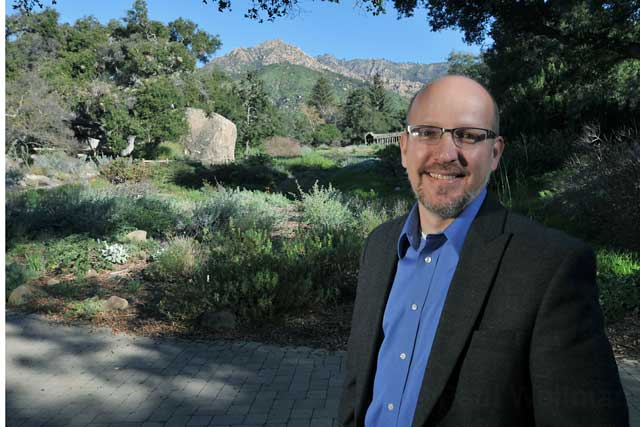Botanic Garden Reaches Out
Repairing Relationships with Online Survey and Community Meetings

After years of contention and controversy rooted in expansion plans, layoffs, and a headstrong administration, happy times are already returning to the Santa Barbara Botanic Garden, just about two months after the new executive director, Steve Windhager, came from Austin, Texas, to take the reins. The staffers are again smiling, the long-striking volunteers are returning, the board of directors is growing substantially, and Windhager’s approachable, community-minded leadership—which replaces the more tight-lipped, no-holds-barred style of former director Ed Schneider and former board chair Fife Symington III—seems to be winning over the garden’s once entrenched foes.
“We are in the process of trying to make sure our programs and activities are in line with our mission,” said Windhager, who is inviting the community to fill out an online survey and attend a series of community meetings that will build upon ongoing staff and board sessions to create a visioning document that will guide the next five or so years. (The survey link can be found at sbbg.org; the meetings, which are being funded by a Santa Barbara Foundation mini-grant, are at the Museum of Natural History on February 22, April 7, and May 17, 6-8:30 p.m.) Windhager said that the fight for county approval of the Vital Mission Plan—which was approved last year after nearly a decade of debate and spells out the upgrading and expansion of the Botanic Garden—caused everyone to be a “little distracted” from the institution’s true role. “We became so focused on just the buildings that we confused the fact that they are means and not ends in themselves,” said Windhager. “I am refocusing on the ends.”
That also requires reinvigorating the entire organization, so Windhager and current chair John Wiemann have also added three members to the board of directors—which critics often charged was under the minimum amount required in the bylaws—and plan to have 20 members by the end of the calendar year, with a balance of new blood and experienced members. He has met with the volunteers who began striking to protest the old administration, and is happy to proclaim that “the moratorium has ended” and that many of them have returned. (He did also note, however, that he did not comply with their request to put a formerly striking volunteer immediately on the board, which he thought would be a “recipe for disaster.”)
And he has even reached out to former staff members such as Carol Bornstein, an immensely popular employee who was laid off. Although not rehired, Bornstein is already signed up to deliver a lecture in the fall and will likely return to teach some workshops this year. Though he does not want to discourage nor guarantee that any former staffers will get their jobs back, Windhager plans to at least offer to some the chance to teach classes. “I want to heal these relationships,” said Windhager, who will use the new outreach campaign to reassess any employment holes. “When we finish the planning process and know what we need to do, we will staff it accordingly.”
The Vital Mission Plan, meanwhile, marches slowly forward, with the Botanic Garden scrambling to comply with the new permitting rules that were supposed to go into effect on January 1. “We are moving forward with it in appropriate ways,” he said. By the end of this month, Windhager expects the turnstiles to be installed to track attendance, he said that the remote weather station—which will more accurately detect red flag fire-condition days in Mission Canyon—will be operational by high fire season, and he explained that the mandated changes to the Botanic Garden’s historic landmark meadow are moving through the approval process. As to construction, Windhager believes that an expanded herbarium and new horticultural resource center remain the priorities. “They directly affect how we can do our job,” he said.
Beyond that, Windhager hopes that the new visioning process will reflect a desire for the institution to be more active in the life of the everyday Santa Barbaran. “I hope to be encouraging people to use more native plants in their own lives,” said Windhager. “We can be changing the way that Santa Barbara gardens.”



